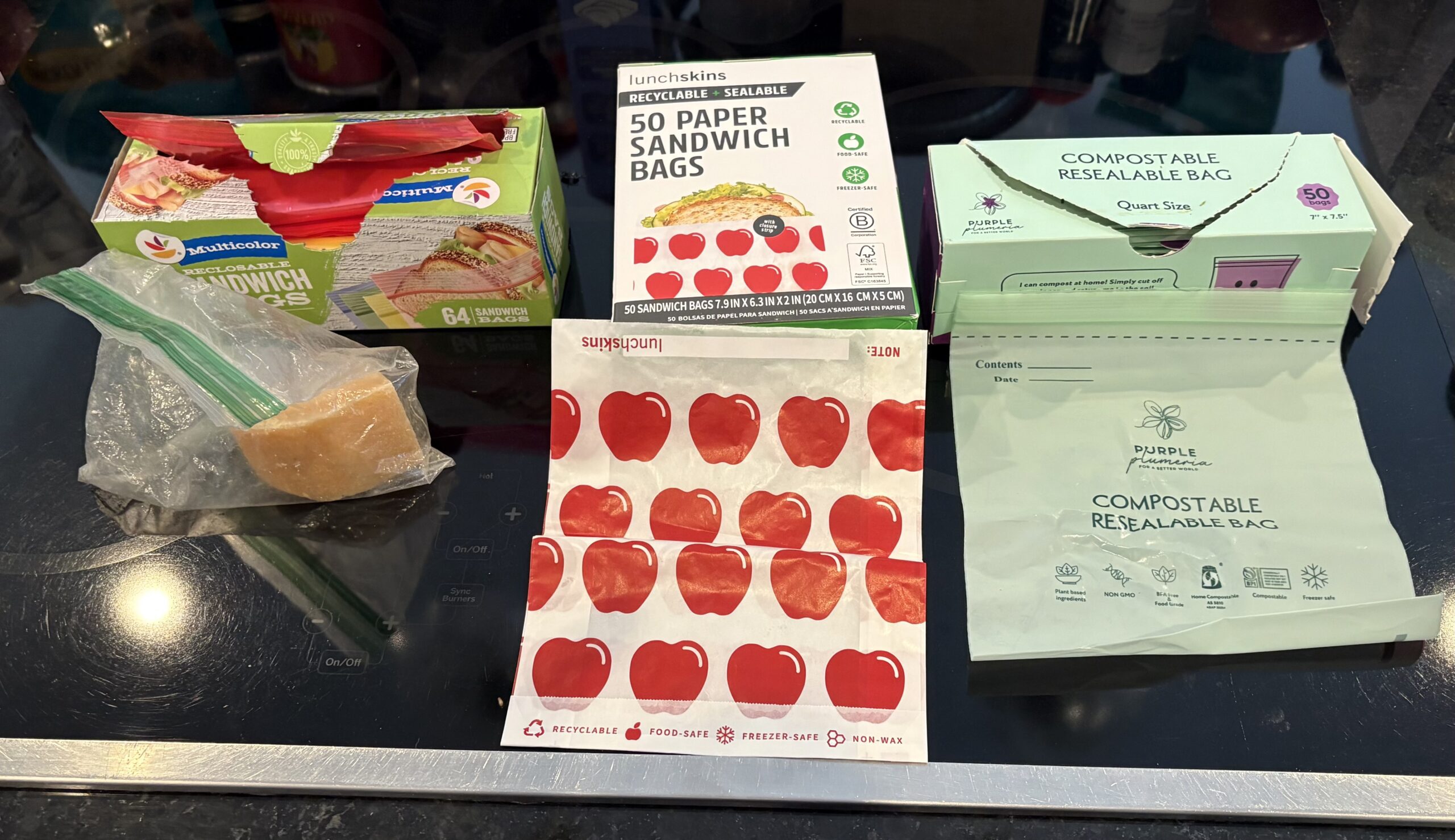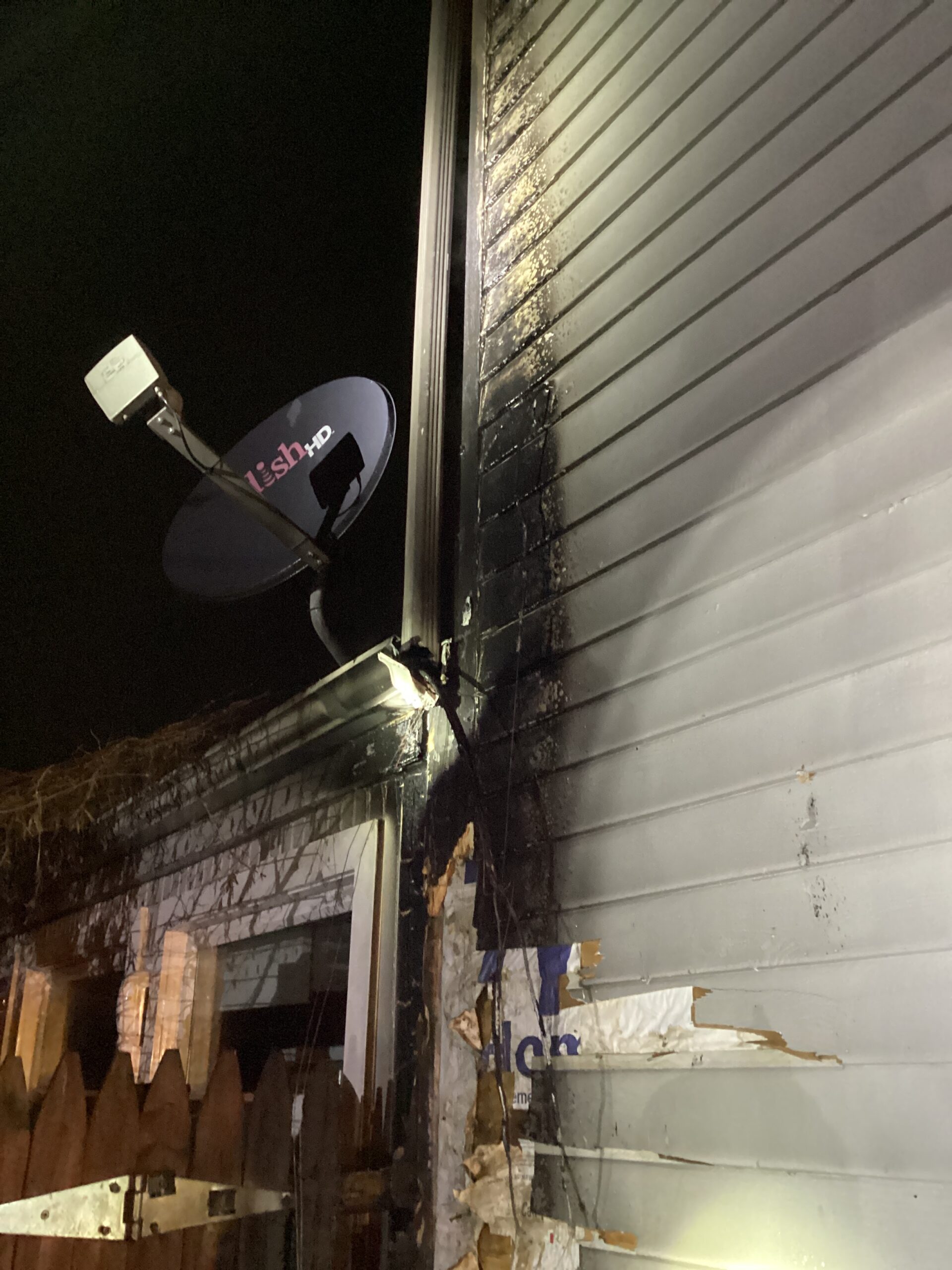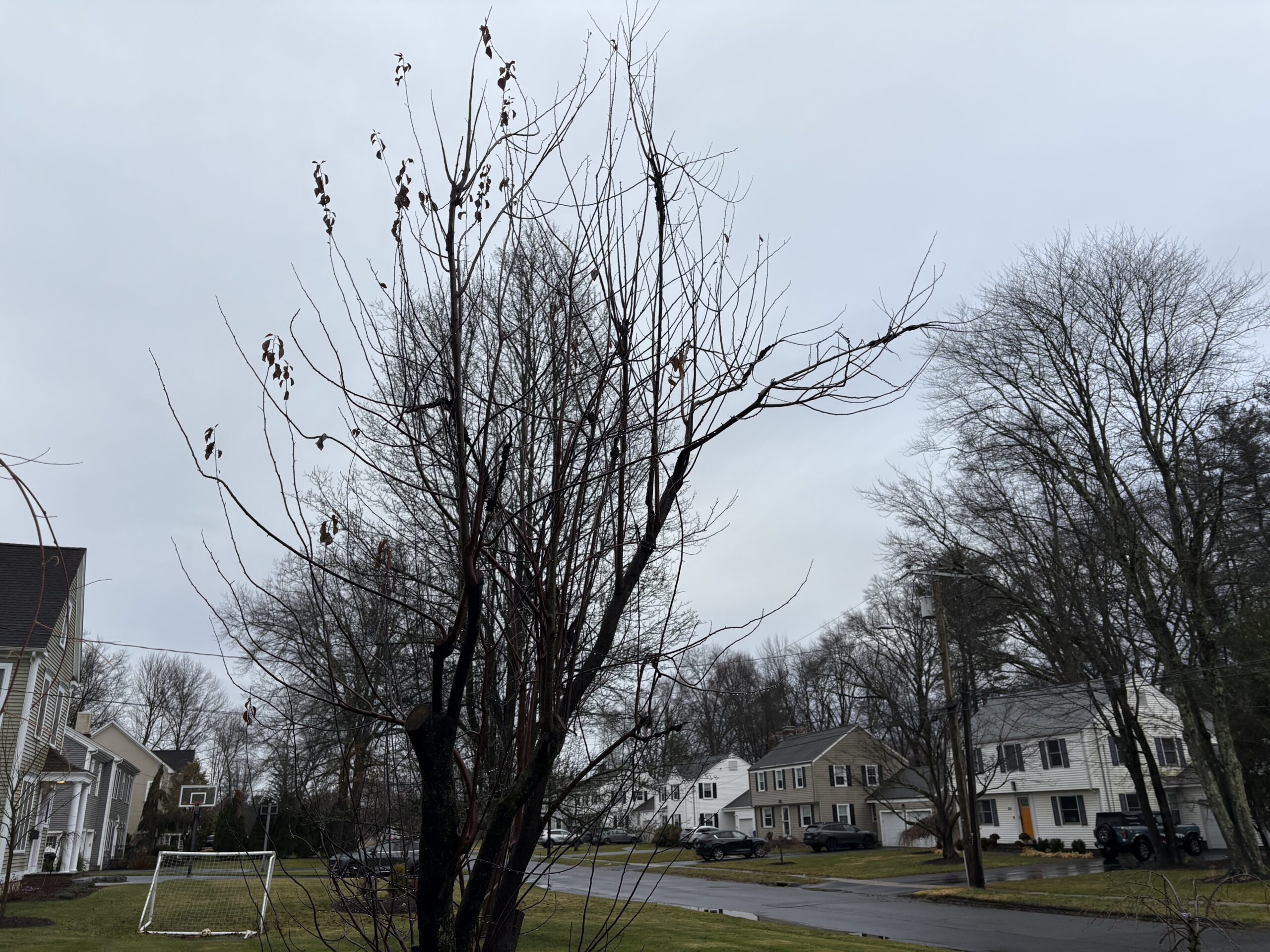Consumer Diary: Paper vs. Plastic Bags

Audio By Carbonatix

I gave up the plastic sandwich bags we’ve used for decades - because they release microplastics — and ordered resealable paper bags, which don’t leach microplastics. Which do I like best? Read my column. Photo credit: Harlan Levy
Consumer columnist and West Hartford resident Harlan Levy has more than 20 years of experience writing stories about everyday experiences that anyone could encounter.
By Harlan Levy
For decades my wife and I have stored food items in plastic sandwich and gallon bags. I’ve also been drinking Hint water in its plastic bottles for a decade. Then, after reading many articles about the release of microplastics and nanoplastics from plastic water bottles I recently stopped my Hint water habit, and, as I recently wrote, began ordering water in paper boxes, eliminating swallowing all the micro- and nano-plastics from the water bottles.
Today I’m writing about eliminating plastic sandwich and gallon bags from our kitchen, since they also release the tiny plastics, and beginning to use paper sandwich and gallon bags instead.
First I’ll describe what’s known about microplastics from online research:
From a Washington Post article I received: “Scientists still don’t know the precise health effects of eating and drinking microplastics. While the tiny particles have been found in the blood, brain, and lungs, scientists are still working out how they might lead to disease. But there have been some hints that the particles have harmful effects. Mice exposed to high amounts of microplastics have shown signs of Alzheimer’s disease and dementia; microplastics and nanoplastics in a key artery have been linked to higher risk of stroke, heart disease, and death. The particles can also carry plastic chemicals with them, which have been linked to developmental problems in young children and infertility later in life.”
Yikes!
Another article: ”Yes, plastic lunch bags shed microplastics, especially when exposed to friction, heat, and general wear and tear. This can happen when opening and closing the bags, or from the breakdown of the plastic over time.“
How plastic lunch bags shed microplastics:
- Friction: Actions like opening, closing, and handling the bags cause microscopic plastic fragments to break off.
- Heat: Exposure to heat, whether from microwaving food or a warm or hot environment, can accelerate the shedding of microplastics. Heating anything in a plastic container increases the release of micro particles and they get absorbed into foods or liquids.
- Wear and tear: The more a plastic bag is used, the more it degrades and sheds microplastic particles.
- Single-use: Even single-use bags can release microplastics during their one intended use, such as when tearing open a snack bag.
Paper bags
On Amazon I found two makers of paper bags: Lunchskins and Purple Plumeria.
- Purple Plumeria: The company states that its compostable resealable bags are made from plant-based materials, which is the basis of their claim to be microplastic-free. They’re also designed to break down completely in a compost environment into natural components without leaving harmful microplastics behind when composted properly.
Also, the company also highlights that the bags are free of chemicals like BPA, phthalates, and PVC.
- Lunchskins: Its resealable paper bags, including their recyclable and compostable versions, are designed to be plastic-free and do not shed microplastics.
Materials used in Lunchskins paper bags are glassine paper. Many of their sealable, recyclable paper bags are made from a type of non-wax, unbleached, translucent paper called glassine. It is naturally grease- and moisture-resistant without needing plastic coatings.
Other products, such as the compostable lunch sacs, are made from durable, unbleached kraft paper. The compostable zip-top bags are made from plant-based materials and are also certified to be 100% plastic-free.
The company also states that its paper bags contain no plastic lacquers, liners, or coatings.
By using alternative materials like glassine and kraft paper, the bags eliminate the source of plastic that would break down into microplastics over time.
The bags are not treated with per- and polyfluoroalkyl substances (PFAS), which are plastic-like chemicals sometimes used to make food packaging grease- and water-resistant.
The company uses paper from FSC-certified forests or sustainable material sourcing.
Which are best: In my opinion. Purple Plumeria is best. While Lunchskins have a tape to remove – like a self-paste envelope – to expose a sticky strip, the strip doesn’t hold for more than a few openings. Purple Plumeria, like plastic bags, have a recloseable built-in zipper closure. You press the two sides of the zipper together to create an air-tight seal.
Also, Purple Plumeria bags feel like ordinary softish plastic bags, while Lunchskins’ paper is stiffer and crinkles like waxed paper.
Now you know.
NOTE: If you have a consumer problem, contact me at [email protected] (“Consumer” in subject line), and, with the power of the press, maybe I can help.
Like what you see here? Click here to subscribe to We-Ha’s newsletter so you’ll always be in the know about what’s happening in West Hartford! Click the blue button below to become a supporter of We-Ha.com and our efforts to continue producing quality journalism.




Thanks again for your useful and environmentally responsible research.